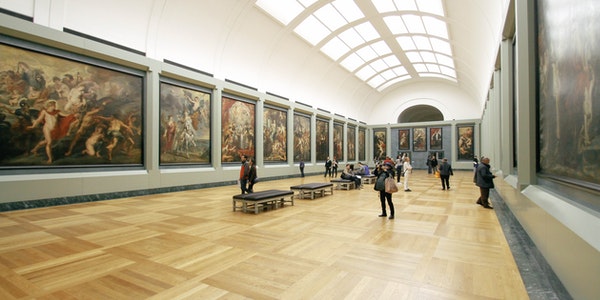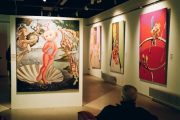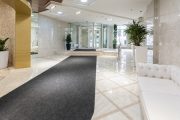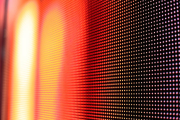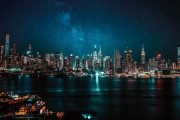At this stage, the world’s art museums are developing rapidly, and the types of exhibits and exhibition formats are rich and varied, which are different from traditional museums in terms of display lighting. In order to better understand the lighting of museums and art galleries, a survey was conducted by the World Art Association. What is the difference between museum lighting and art gallery lighting? Let’s follow the artists to see the difference between the two from the particularity of the art gallery lighting.
The particularity of art gallery lighting
The lighting of art museums is different from that of museums, which is firstly manifested in the difference in the illuminance conditions of the exhibitions. The types of exhibits are mainly modern exhibits, and the comprehensive material exhibits are also rich. Compared with museums with a large number of cultural relics exhibits, there are obvious differences in lighting methods and expression methods, and the majority of them use spacious and bright lighting methods. In addition, lighting design forms that utilize natural light and imitate natural light are common. In addition, the lighting design pays more attention to the color reproduction and realistic expression of the exhibits.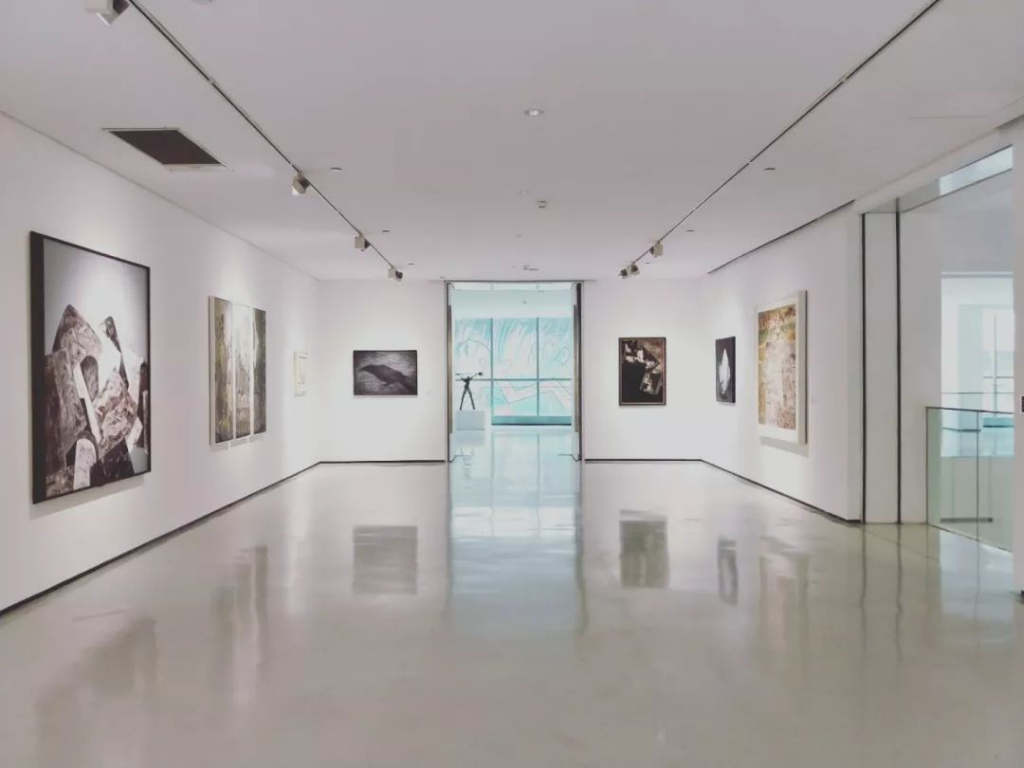
Secondly, there are also obvious age differences for museum visitors. Some spectators with relatively higher levels of art appreciation are more likely to visit the museum, and their aesthetic requirements are more obvious, and they have a stronger sense of experience in terms of visual comfort, and they also have a higher aesthetics than museum audiences.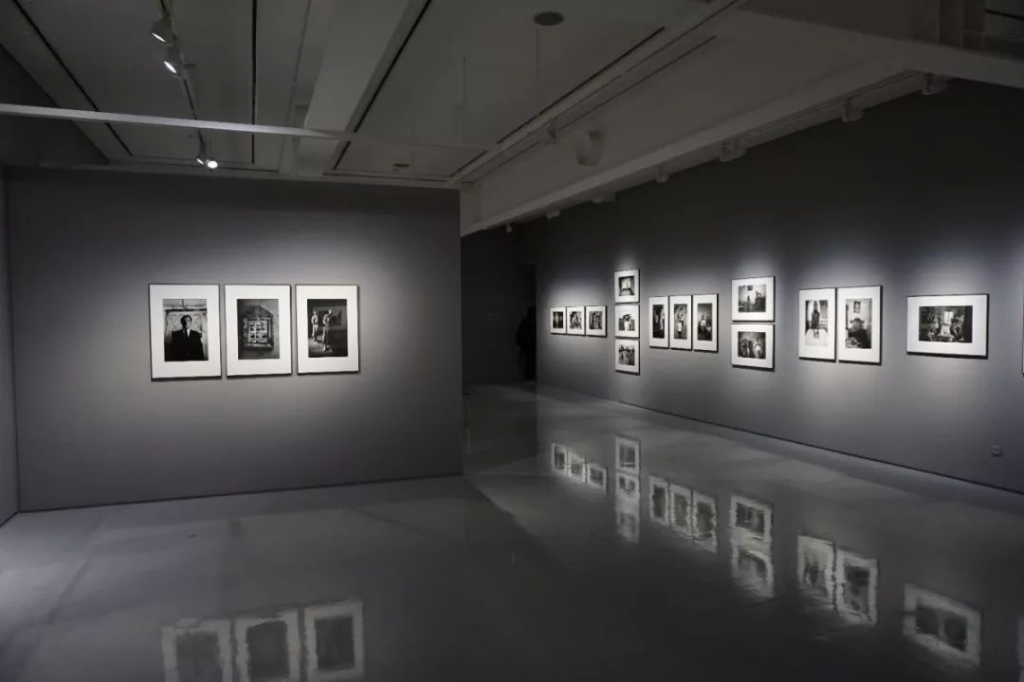
In addition, in terms of the spatial scale of the exhibition hall, art museums are also significantly different from traditional museums. In particular, large-scale and large-scale works are increasingly appearing in the display of contemporary art, and the space design of newly constructed art museums will cater to the open and bright large space and large-scale sense of place. There is a difference in the form of exhibition space from the museums with the majority of historical relics and document exhibitions. The museums that focus on the protection of exhibits form a clear contrast in the way of lighting expression.
The lighting design will also be very different. The lighting products selected for high spaces will have significantly higher technical requirements for the physical indicators of the lamps than those of the museum. The color reproduction of exhibits is also higher than that of museums. For these special forms, we will reasonably guide the evaluation direction when we make the evaluation standards for art museum lighting. 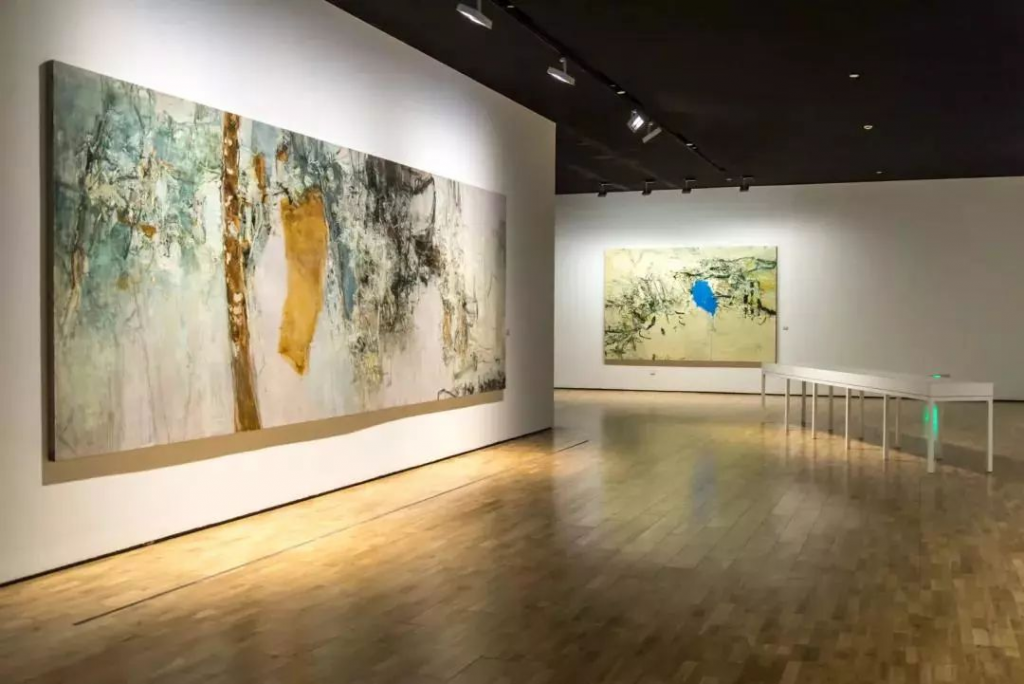 Art museums are also different from museums in terms of lighting management. Most art galleries do not have basic displays or even fixed collections. Their main work is temporary exhibitions and external exchange exhibitions. The exhibition period is relatively short, often only a few days. Due to frequent replacement of exhibits, the quality requirements for lighting products will also increase. In addition, in the use and maintenance of light sources and lighting products, the increase in damage rate will also increase the quality requirements of the art museum’s lighting sources and lamps, and enhance the stability and safety of lighting equipment.
Art museums are also different from museums in terms of lighting management. Most art galleries do not have basic displays or even fixed collections. Their main work is temporary exhibitions and external exchange exhibitions. The exhibition period is relatively short, often only a few days. Due to frequent replacement of exhibits, the quality requirements for lighting products will also increase. In addition, in the use and maintenance of light sources and lighting products, the increase in damage rate will also increase the quality requirements of the art museum’s lighting sources and lamps, and enhance the stability and safety of lighting equipment. 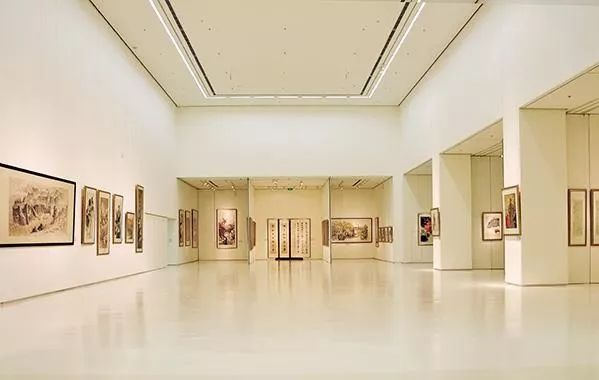
In addition, art museums are also stronger than museums in terms of lighting maintenance. In the use of lighting equipment, in order to meet the flexible needs of the later management of the library, it is best to choose an intelligent control system that can be adjusted and used for multiple purposes.
Of course, for art museum managers, the workload of the post-maintenance of lighting products is also heavier than that of museums. More funds will also be invested in the later capital management of the equipment. The above factors are significantly higher than the museum’s lighting quality requirements. Current World Art Association research data shows that art museums have also responded quickly to the use of new light sources, LEDs, and are significantly faster than museums in eliminating traditional light sources.
The current change of art gallery lighting
With the maturity of LED lighting product technology, changes have taken place in light source applications. Many traditional light sources have been discontinued and are facing elimination. In particular, the application scope of traditional museum halogen light sources and fluorescent lamps is shrinking year by year. Various practical reasons have caused the museum to have difficulties in daily maintenance of lighting products and equipment.
At present, LED lighting technology is still in the perfect stage, and has obvious advantages in energy saving and intelligence. The protection of the exhibits is also outstanding. The content of ultraviolet and infrared is extremely low, and it also has a good protective effect on the exhibits. Therefore, it is conducive to its promotion and popularization in museums and art galleries. Many newly built and renovated and expanded places have basically adopted LED as their mainstream products. 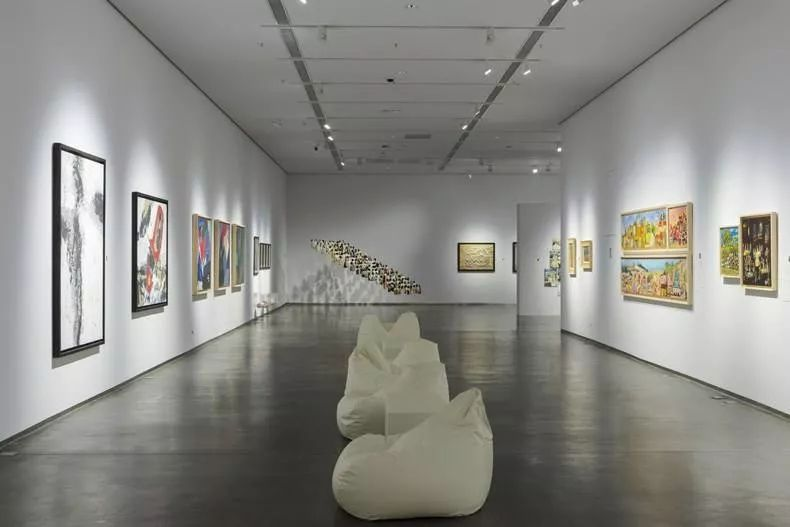
Gallery lighting requirements
The light environment is an important indicator to measure the level of art galleries and museums. In order to keep the exhibits properly, they must be protected from optical radiation as much as possible; in order to create a good visiting environment for the audience, it is necessary to improve the lighting level.
Exhibit lighting
The overall effect of the display is more important than the visual effect of a single exhibit. What the display lighting design needs to achieve is the balance between overall lighting and local accent lighting, and the balance of colors and brightness between the exhibits and the background. Display lighting requires excellent color rendering performance to avoid uncomfortable glare. The shape, form and texture of the exhibits also need to be carefully considered.
- Uniformity.
The ratio of the lowest illuminance to the highest illuminance of the general picture should not be less than 0.7; the extra-large picture should not be less than 0.3.
- Contrast.
Contrast can be defined as the ratio of the brightness of an object to the brightness of the background or environment. The illuminance of the surface of the concrete object is directly proportional to the reflectance. Need to understand the reflective properties of the object, the background materials and the overall lighting method.
- Visual adaptation.
The brightness range of each area of the museum should be limited so that the eyes can adapt at any time. The screen brightness should be higher than the surrounding background brightness, and the brightness ratio should not exceed 3:1. Areas with too high brightness will become glare areas, causing visual difficulties and affecting the viewing of the details of the exhibits.
- Apparent color
Contrast can be achieved not only through differences in brightness, but also through differences in color. If the object and the background are illuminated by light sources with different correlated color temperatures, the color contrast can be revealed. It is necessary to avoid causing color distortion of the exhibits, and avoid excessive chromatic aberration leading to distraction of visual attention.
- Color rendering performance
When displaying paintings, colored fabrics, multi-color exhibits and other places with high requirements for color discrimination, light sources with a general color rendering index of not less than 90 should be used as lighting sources. For places with general requirements for color discrimination, a light source with a color rendering index of not less than 80 can be used as the illuminating light source.
- Exhibits background
The background of the exhibits not only affects the display effect, but also affects the receiving state of the eyes. Visual reception depends on brightness and color. The brightness contrast between the background and the object should not be too large. If the background is obviously brighter or darker than the exhibit, it will reduce the quality of the details seen.
- Glare
Glare is formed by directly or indirectly seeing light sources, windows or other light sources that are too bright compared to the overall brightness in the entire field of view. The selection of exhibits, light sources, and the relative position of the observer can help the team overcome the problem of glare. When viewing objects displayed in a showcase that is not illuminated from the inside, the vision is often disturbed by external light sources, illuminated exhibits or other reflected light, which is called reflected glare. The control method is as follows.
(1) One reflection glare. The light source is generated by the picture, especially the reflection of the picture with a mirror frame. In order to prevent reflected glare, a 10° margin can be considered for the projection angle of diffused light. At the same time, in order to prevent unevenness on the screen, the lamp cannot be designed within the range of 20° angle to the screen.
(2) Secondary reflection glare. Because the brightness of the audience or surrounding objects is higher than the brightness of the screen, the glare caused by the reflection of the image on the glass surface. The way to disappear or weaken the secondary reflection glare is to control the brightness of the audience and surrounding objects to make it lower than the brightness of the screen.
- Three-dimensional
For three-dimensional exhibits, the three-dimensional impression should be expressed. Stereo sensing is achieved through the combination of directional lighting and diffuse lighting.
- Accent lighting
(1) For the display of the wonderful things of the item, it is usually realized through accent lighting.
(2) The point light source that produces the light beam is usually used to emphasize the key points of vision, the three-dimensional sense of the exhibits and the essence of the area.
(3) The size of the beam is very important to determine whether a beam is sufficient to illuminate the object, otherwise it is necessary to consider projecting several intersecting beams.
Special display (product) lighting
The exhibits of art galleries and museums can be divided into three-dimensional and planar forms. According to the exhibition time, they can be divided into permanent and temporary. The following exhibits require special lighting.
- Large-scale three-dimensional exhibits.
Large-scale three-dimensional exhibits are three-dimensional exhibits, such as sculptures, mechanical equipment, clothing and artillery weapons. The following lighting methods are commonly used:
(1) The point light source lighting comes from one side, and the flood light source lighting comes from the other side, causing different degrees of shadows and highlighting the three-dimensional feeling.
(2) Use different colors of light to project from different directions, creating a prominent impression of the exhibits.
(3) Exhibits with only one viewing direction should be projected from the viewing direction.
- Plane exhibits on the vertical plane.
The plane exhibits on the vertical plane include paintings, prints, photographs and important documents, etc. The following lighting methods are usually used:
(1) Fluorescent lamps are generally used for the lighting of exhibits on the vertical wall, which can provide soft and continuous light, so that the vertical surface has a good brightness contrast.
(2) The lighting method of the light-emitting panel, that is, the exhibits are set into a photo film, the outer cover is milky white or transparent plexiglass, and a fluorescent lamp is set behind it. The effect is realistic, simple and practical.
- Showcase.
Showcase lighting is mostly used in cabinet settings, and it can also be illuminated by external spotlights. Fluorescent lamps are usually used because of their high luminous efficiency and low heat generation.
(1) Pay attention to hiding the light source in the cabinet to prevent visitors from seeing it,
(2) Ensure that the illumination in the large display cabinet is uniform, and the uniformity should not be less than 0.3.
(3) Avoid reflections on the exhibit surface and the glass surface of the showcase,
(4) Pay attention to setting up anti-ultraviolet measures, such as the use of optical fiber lighting in the showcase,
(5) In order to solve the temperature rise of the display cabinet, a light source with a small amount of heat per unit illuminance should be used.

